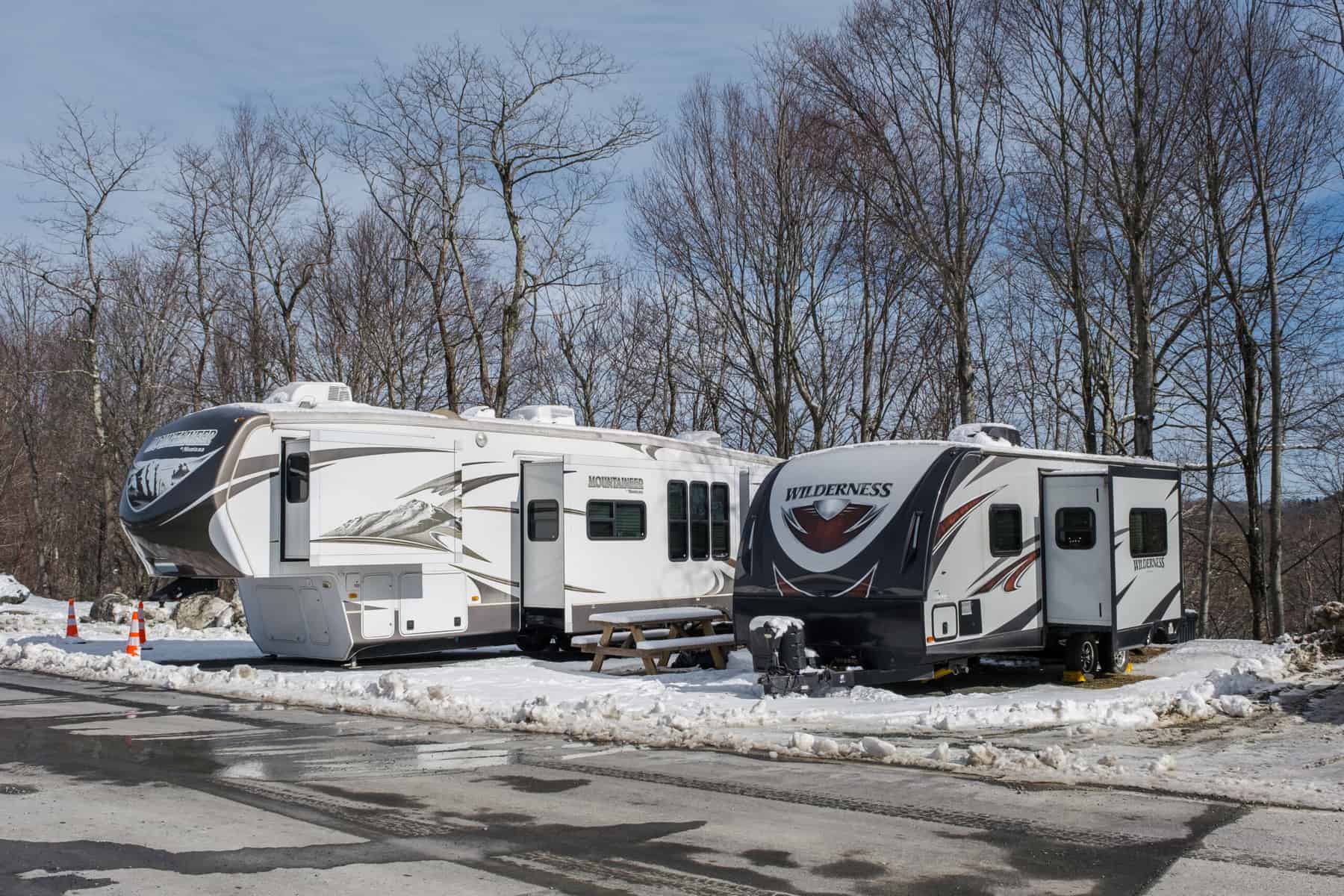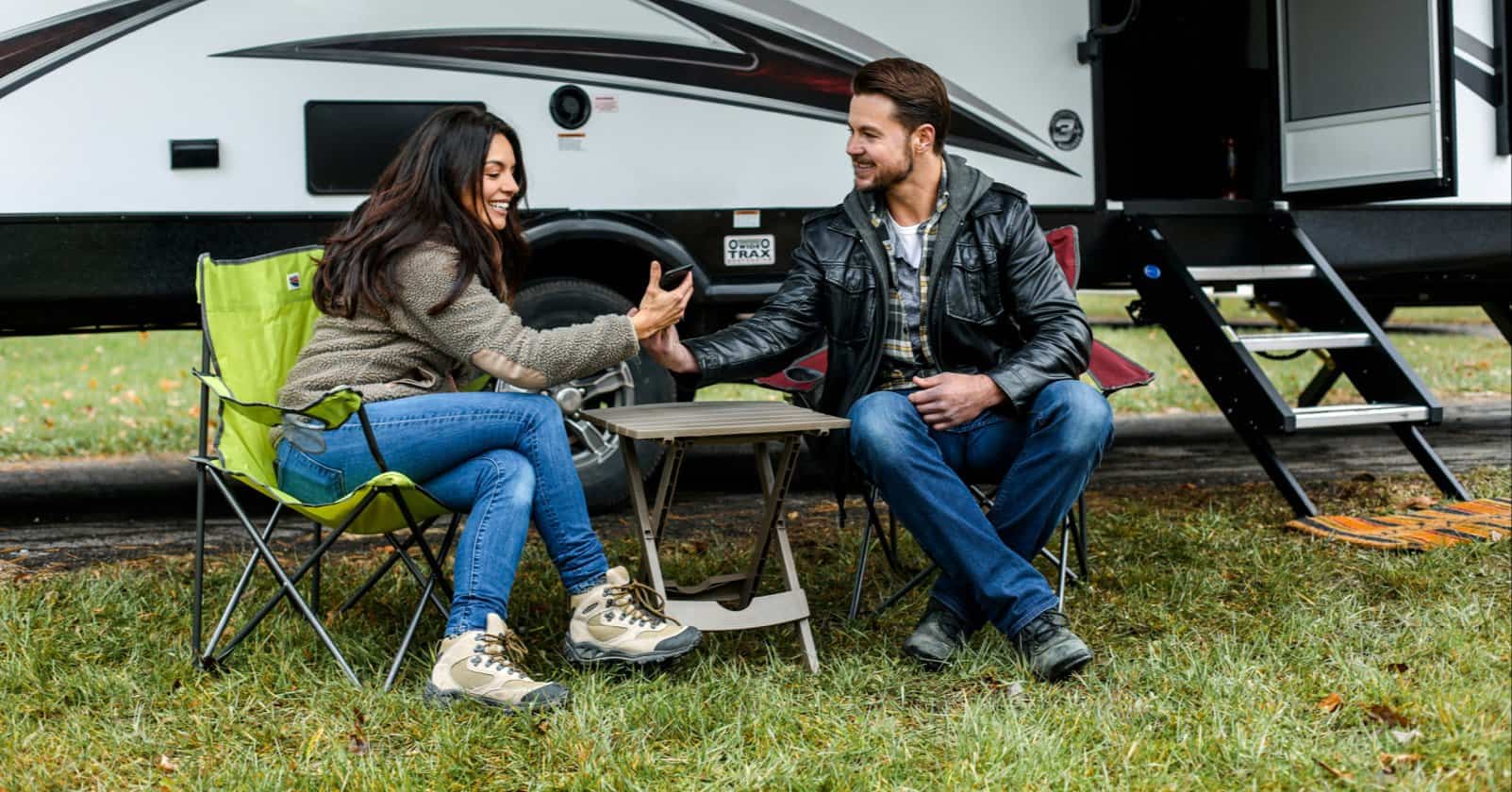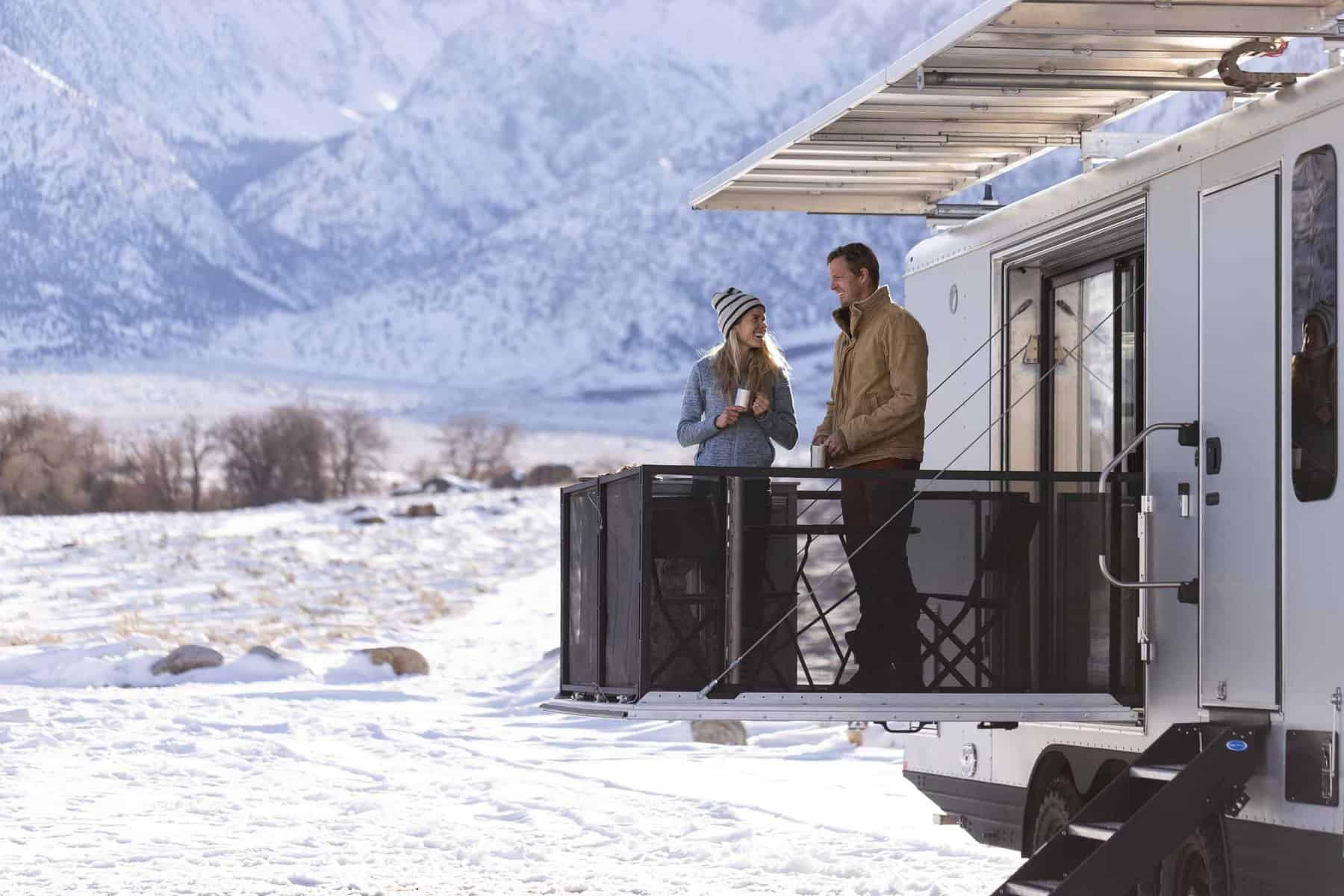If search online for “What’s the best way to back up a trailer without help?” you will receive dozens of articles. YouTube also has many videos on how to back up a trailer. However, it’s tough to find any that deal specifically with backing up a travel trailer alone. This article can help solo RVers do it successfully.
9 Tips to Back Up a Travel Trailer Alone
As someone who has been around travel trailers his entire life and has had to back up unassisted hundreds if not thousands of times, I have developed a few tricks along the way.
Many of these solo back-up tips will also apply to motorhome users. Fifth wheel owners can find backing tips here. Let’s get started.
Keep one hand at the bottom of steering wheel.
It doesn’t matter if you are backing up a travel trailer without help. Or, if you have a travel partner to assist. Always place one hand at the bottom of the steering wheel. This makes it simple to know which way the back of the trailer will pivot when turning the wheel.\
If you don’t already employ the trailer back up principle or understand it, I encourage you to watch this short video:
Get Out And Look (aka G.O.A.L)
Since you will be backing up a travel trailer alone, you won’t have a spotter to warn you of hidden obstacles that could damage your RV. Always look for potential hazards. Keep an eye out for low hanging tree limbs, or debris that could damage a tire. Sometimes utility vaults are dangerously uncovered. The low post designating your campsite space are also problematic.
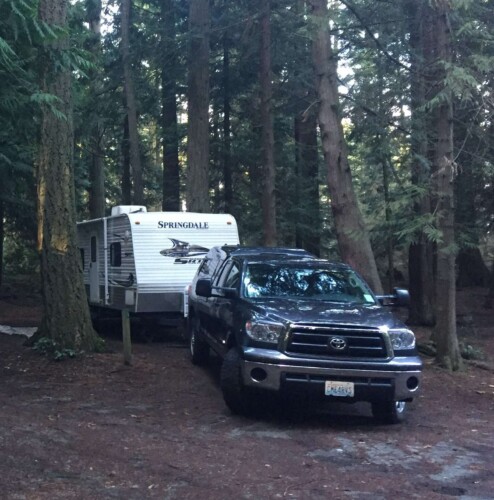
Avoid “blindside” backing wherever possible.
When a campground host hands you a map to your campsite, pay attention to the approach. The situation known as “backing up blind” is difficult even when you have a partner to assist.
- Blindside backing prevents you from having a direct line of sight to the back of the trailer.
- The back end of the trailer often leaves the field of view of the side mirror when backing in blind. This leaves you unable to see to what’s happening without the aid of a spotter or backup camera.
- Even with a rear mounted back up camera you are unlikely to have any knowledge of obstacles on the blind side of the trailer. That is, until you hear the crunch of your trailer impacting them.
Use any available technology your RV or tow vehicle offers.
Does your RV have a backup assist feature like an RV back up camera, proximity detectors, etc.? These devices will indicate when you have reached the back of the space.
Use a wireless portable magnetic camera.
A portable magnetic camera allows you view hazards that you can’t see from the cab of the tow vehicle, or in your side mirrors. The monitor in your cab will let you keep these items in view as you back up unassisted.
Here’s the best way to use a wireless portable magnetic camera to back up a trailer alone:
Other ways to use a magnetic camera to back up a travel trailer without help:
These are just a few of the many uses for a portable wireless back up camera like the Eye Ball.
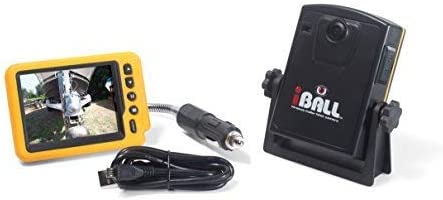
Follow existing tread marks
Are there tread marks in the gravel or asphalt that show you where previous RVers exited the campsite? Go where others have gone before you. Just place the tires of the travel trailer on them. Then let the tread marks guide you into the site like a pro.
Rotate your side mirrors down
Are there low obstacles along the side of the campsite? Are they visible when side mirrors in their normal position? If not, aim the mirrors down until you can clearly see the items you are navigating past.
Rotating side mirrors down is especially helpful in spots where large rocks line the edge of the parking apron. Or when boulders are placed to prevent people from shortcutting corners.
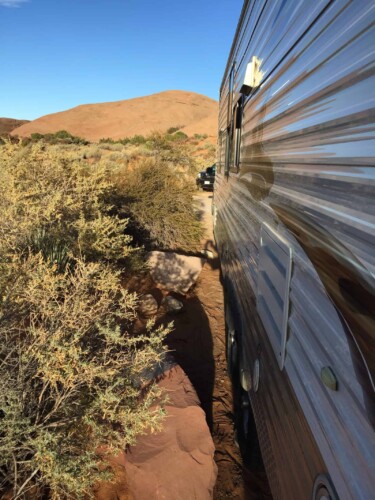
Lightly turn your steering wheel back and forth as you back up alone.
There will be times when you find yourself backing a travel trailer alone down a long straight road. When it happens, lightly turn your steering back and forth as you proceed. The movement brings one and then the other rear corner of your travel trailer into view of the side mirrors. It lets you know where the rear of the trailer is located in reference to the sides of the road.
Use a wheel chock as a marker.
Need to back into a space “just a little bit farther”? What if you don’t have someone to yell “STOP!” before hitting something? Pace off, or measure the remaining distance you need to back up alone. Then place a wheel chock or block a slightly shorter distance behind one of the rear wheels of your trailer. When you feel the trailer bump up against the block or chock you know you are there.
Practice How to Back Up a Travel Trailer Alone
Hopefully these tips will make you more comfortable backing a travel trailer alone. If you still aren’t confident about how to back up a travel trailer alone, consider taking your rig to a large vacant lot free of obstacles to practice. Use traffic cones, pucks (LED emergency road flares) or other items that won’t damage your tow vehicle or travel trailer. These items can simulate obstacles and the camping space to help you get better at this important maneuver.

